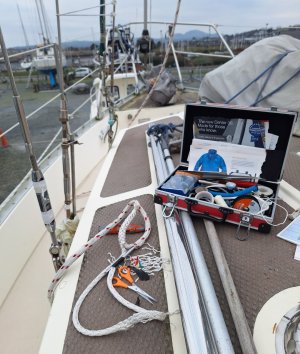Chiara’s slave
Well-known member
I may well have blurred the difference there. Any rope with a very tight sheath is difficult, Marlowbraid may well be the worst. It’s why I don’t splice the cover on Dyneema.It's nothing compared to splicing Marlowbraid, which you'd think would be the same but it's actually completely different and additionally has a very tight sheath. My favourite these days is cruising dyneema because it has an intermediary layer that gets removed so there's plenty of space to work inside the rope.

